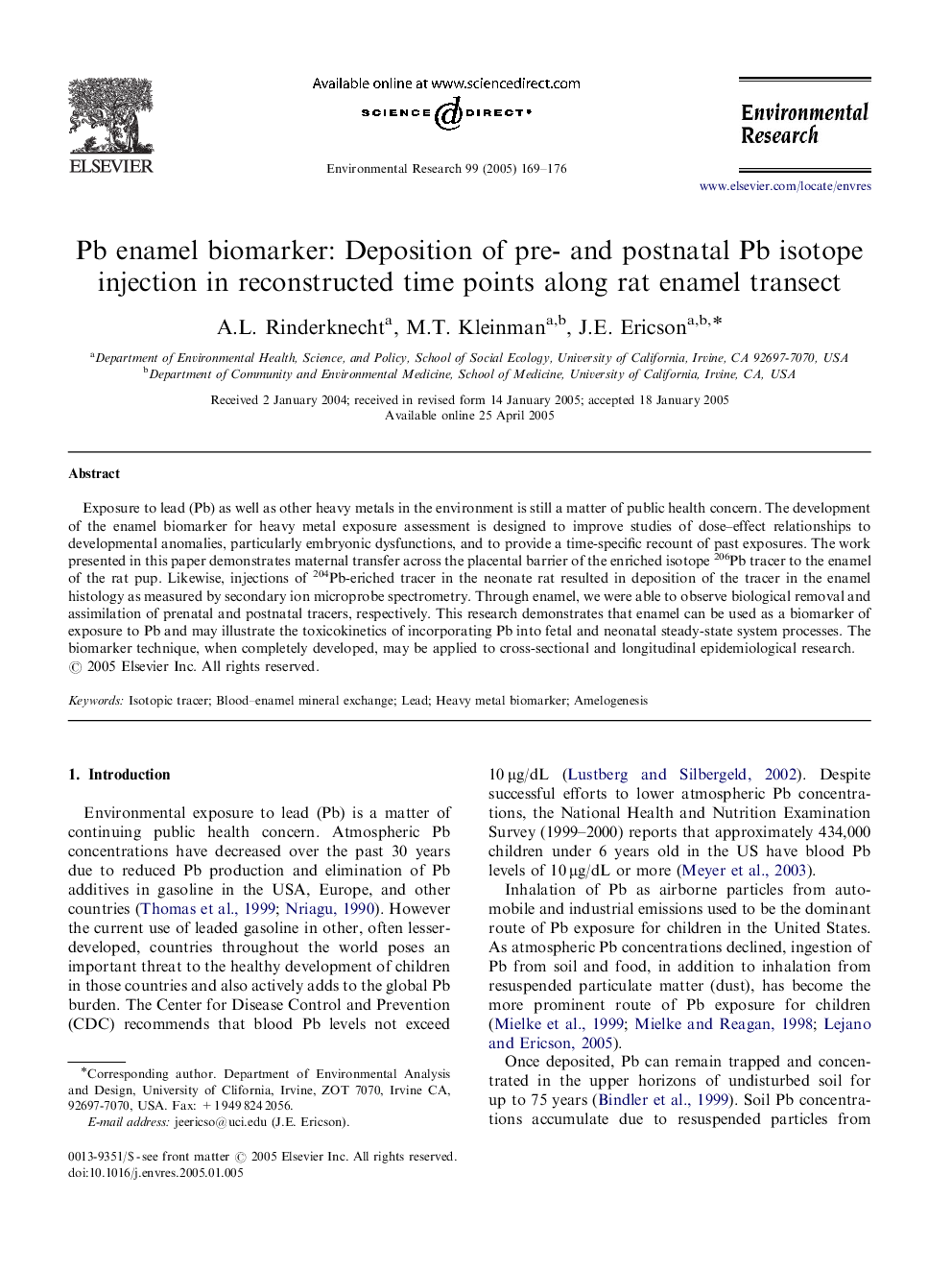| Article ID | Journal | Published Year | Pages | File Type |
|---|---|---|---|---|
| 9464697 | Environmental Research | 2005 | 8 Pages |
Abstract
Exposure to lead (Pb) as well as other heavy metals in the environment is still a matter of public health concern. The development of the enamel biomarker for heavy metal exposure assessment is designed to improve studies of dose-effect relationships to developmental anomalies, particularly embryonic dysfunctions, and to provide a time-specific recount of past exposures. The work presented in this paper demonstrates maternal transfer across the placental barrier of the enriched isotope 206Pb tracer to the enamel of the rat pup. Likewise, injections of 204Pb-eriched tracer in the neonate rat resulted in deposition of the tracer in the enamel histology as measured by secondary ion microprobe spectrometry. Through enamel, we were able to observe biological removal and assimilation of prenatal and postnatal tracers, respectively. This research demonstrates that enamel can be used as a biomarker of exposure to Pb and may illustrate the toxicokinetics of incorporating Pb into fetal and neonatal steady-state system processes. The biomarker technique, when completely developed, may be applied to cross-sectional and longitudinal epidemiological research.
Keywords
Related Topics
Life Sciences
Environmental Science
Health, Toxicology and Mutagenesis
Authors
A.L. Rinderknecht, M.T. Kleinman, J.E. Ericson,
